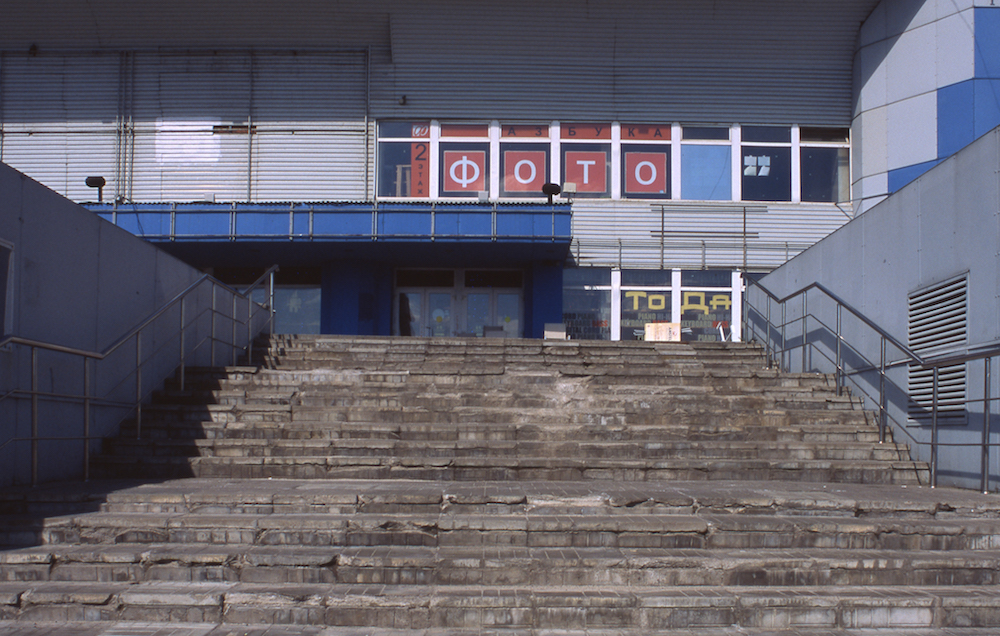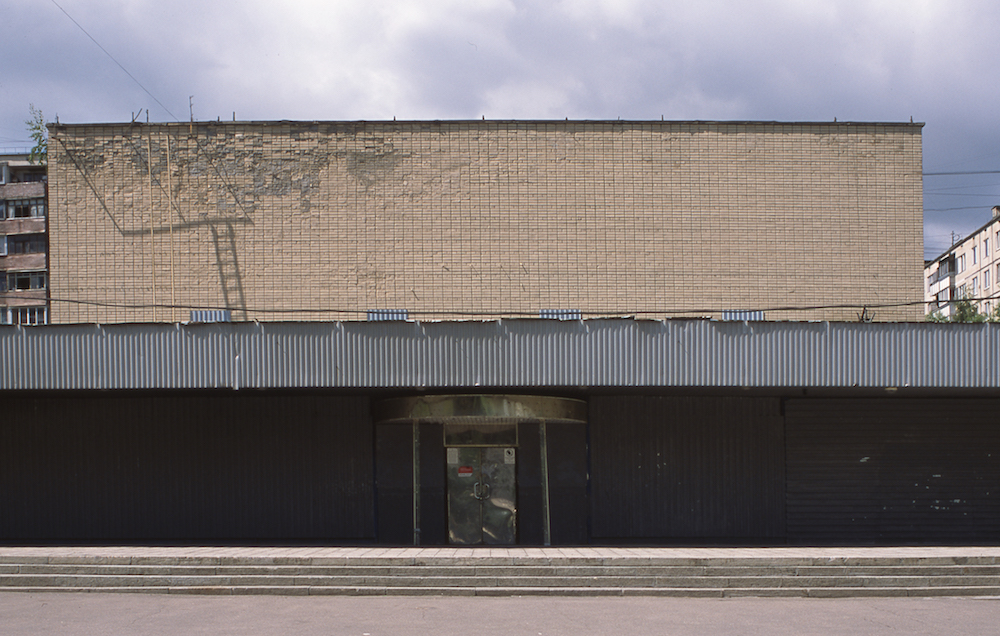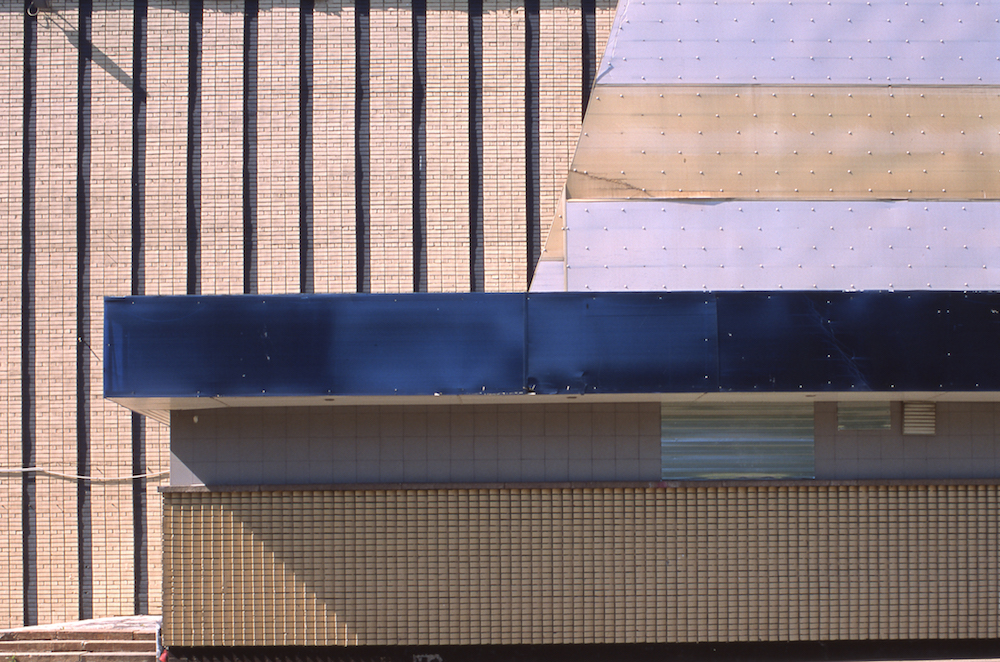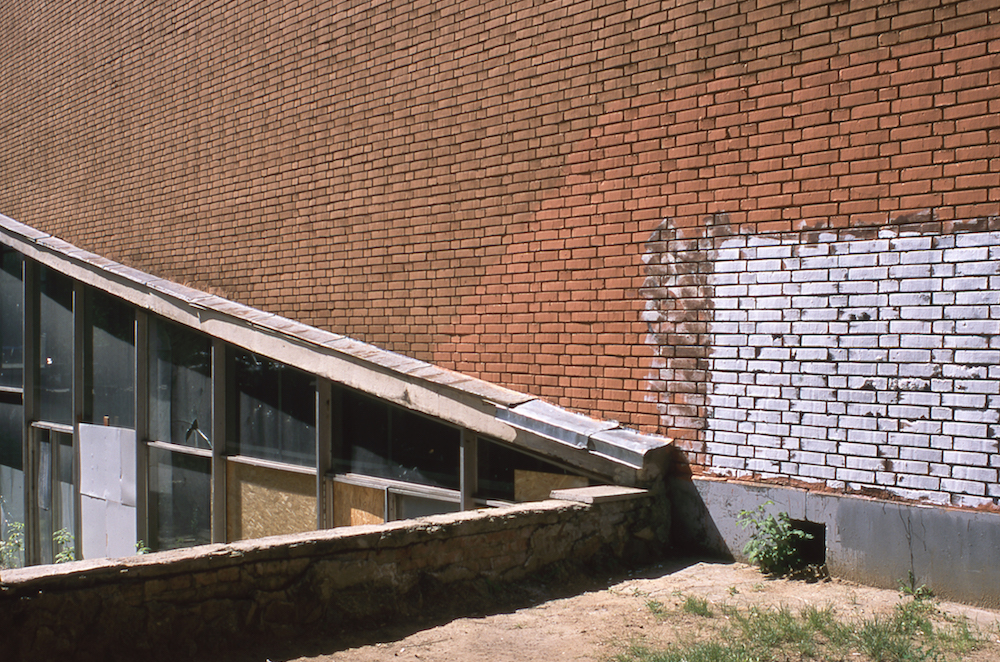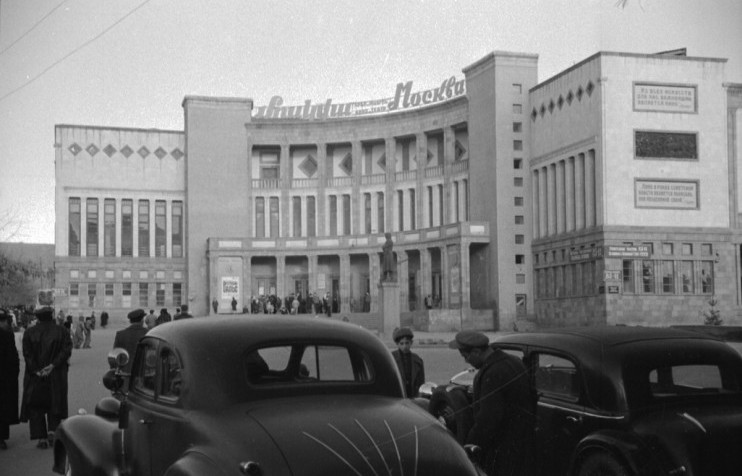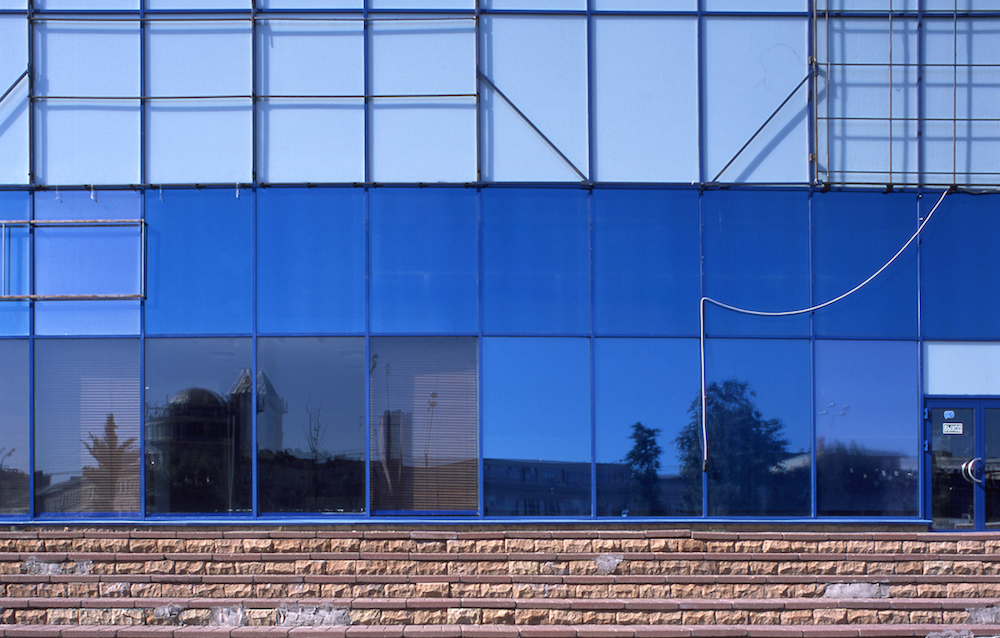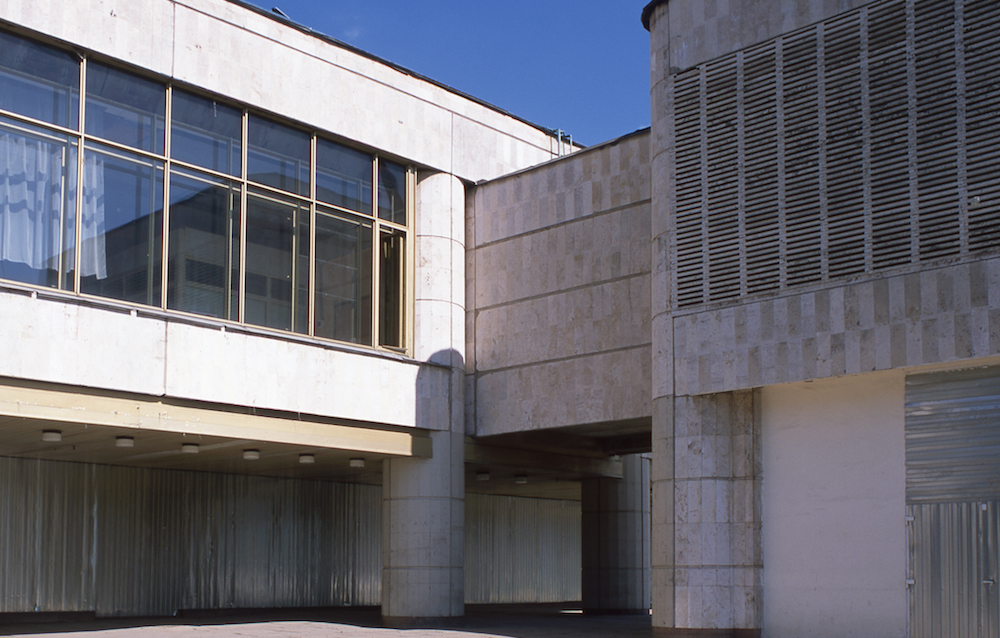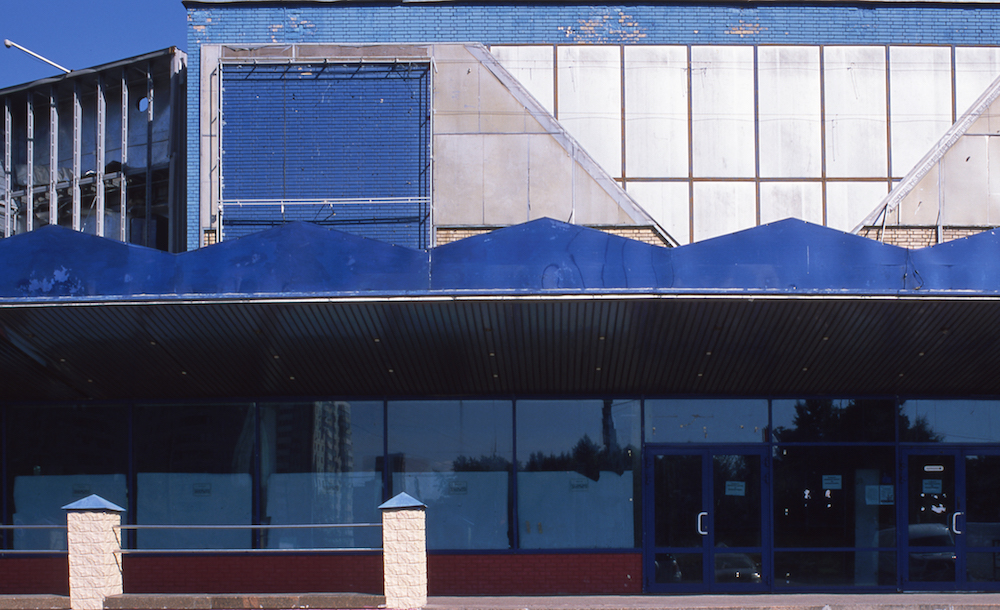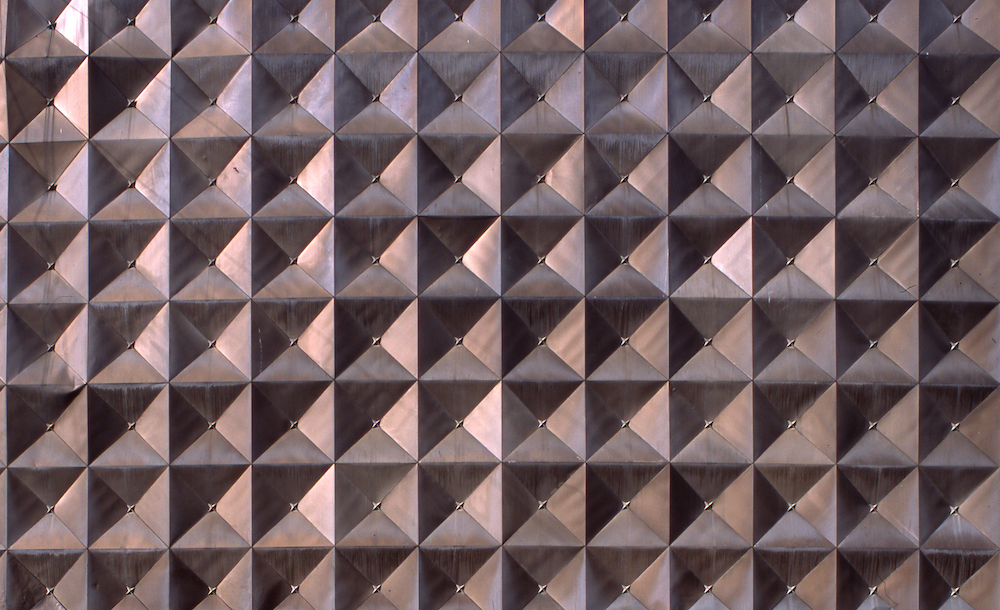A last glimpse of Moscow’s beautiful and derelict Soviet cinemas
Moscow’s Soviet-era cinemas were built as monuments to a political and cultural powerhouse. Now they lie in disrepair and many are on the verge of demolition.
When they were established in the 1930s, Moscow’s network of cinemas covered the Soviet capital with a system of local markers similar in scale and importance to its famous metro. The cinemas were built next to transport hubs in new districts, according to a communist urban vision that aimed to create residential areas with real infrastructure, not mere commuter zones. The ambition for these cinemas to reflect the greatness of the entire Soviet Union lent the buildings a unique significance that went beyond cultural or urban importance.
“The film schedule, with the names of cinemas in alphabetical order, was updated throughout the city on a weekly basis. Standing by these posters, schoolchildren planned when to skip class,” recalls Yuri Palmin, a Russian architectural photographer. Built between the 1930s and the late 1980s, the cinemas showcase different architectural styles: from Constructivism, as seen in the Rodina Cinema, to precious examples of Modernism and Brutalism. A journey through Moscow’s cinemas is a journey through the epochs of Soviet architecture.
The end is at hand for these marvellous buildings, however. In 2014, the Moscow government sold 39 Soviet cinemas to a real estate company, which is transforming them into shopping centres. Officially this is known as “reconstruction into multifunctional social centres” — but in reality, 38 of the 39 (the Rodina has heritage status) will be levelled and rebuilt as commercial ventures. Demolition work is already well underway.
While the destruction of this unique architectural ensemble has not provoked much protest from activists, it has prompted some local anger and a response from Moscow’s artistic community, in the form of a series of exhibitions. The original plan was to create art installations inside the cinemas, allowing them to become a focus of cultural activity one last time. Proposals were put forward by notable artists including Antonia Baever, Alexander Obrazumov, Ira Korina, and Sveta Shuvaeva.
A journey through Moscow’s cinemas is a journey through the epochs of Soviet architecture
Unsurprisingly, the new owners were too afraid of sparking public opposition and too concerned with profit to allow this to go ahead. But the artists and organisers decided go ahead anyway, even if the locations were denied them. Two projects were dedicated to documenting what the cinemas looked like before their demise, capturing the last moments of their existence. Palmin and Austrian-Bulgarian artist Vasilena Gankovska each made a series documenting all 39 cinemas affected.
A third project, BAIKONUR NOW, which was realised earlier this year, was dedicated to a single cinema, the Baikonur, in an attempt to understand its historic context and contemporary reality. Staged by APXIV, one of Russia’s most active independent art groups, and involving current Baikonur employees, it took place on the territory of NIIDAR, a former scientific research institute for long-distance radio communication. The 12 artists of APXIV, all of whom visited Baikonur before it closed, also involved Natalia Baikonurovna — an extraordinary person who has dedicated her entire career to the cinema (and whose adopted surname translates as “daughter of Baikonur”). The resulting exhibition played with the connections between the “original” Baikonur (a famous Soviet-era space launch facility) and the cinema, in the process exploring the post-Soviet fate of such institutions.
It is no coincidence that APXIV played on the cinema’s name in this way. The names of the Moscow sites are key to understanding the vision behind their creation. They reference ever-expanding identities: from the USSR, to other socialist nations, to the universe itself. In the east of Moscow we have the Kyrgyzstan Cinema; in the west there is the Prague Cinema; and then we go further with the Planet Cinema, the Star Cinema and the Fatherland Cinema. The nation’s self-understanding as an empire is on display for all to see.
The cinemas were also decorated according to their names and themes. For example, the Baikonur has a brilliant mosaic depicting astronauts, while the Volga Cinema features the famous river in its decoration and has an indoor fountain. The Kyrgyzstan Cinema has Kyrgyz-style bas-reliefs on the outside of the building, and the magnificent chandeliers in the Orion Cinema were created in a factory producing parts for the aviation and space industries.
All the cinemas began to fall into disrepair after the dissolution of the Soviet Union in the early 1990s, and this process was accelerated as people started to look for new ways of accessing culture: video arcades, television, and modern multiplexes all contributed to the demise of the once all-powerful state entertainment machine.
Even before they were sold off, most of the cinemas had already been closed for years. In any case, the wild legacy of the 1990s had dispelled much of their original atmosphere. Homeless people and skaters gathered out front, where small commercial buildings made of cheap materials and painted in bright colours had sprung up; meanwhile inside the buildings you might find sushi restaurants that converted into nightclubs alongside illegal markets trading everything from pharmaceuticals to antique coins. Inadvertently the cinemas had developed their own post-Soviet dynamic, wild but also fascinating. Just a few months ago, the Volga Cinema looked like a sort of Russian Pompei, its beautiful mosaics spray painted with graffiti.
Although the 39 cinemas in question represent the majority of the capital’s Soviet screen heritage, some have been spared the retail outlet fate. 13 other locations — mostly older cinemas, unattractive to developers — remain in state hands. Reorganised into a new network titled Moskino by a young team of programmers, the hope is that these last bastions of the Soviet culture machine can be transformed into viable cultural hubs. As is so often the case in Russia, that hope is fragile, and very close to despair.
A multimedia installation featuring Yuri Palmin’s photographs of the cinemas will take place in Moscow on November 30.
Text: Simon Mraz
Image: Yuri Palmin
